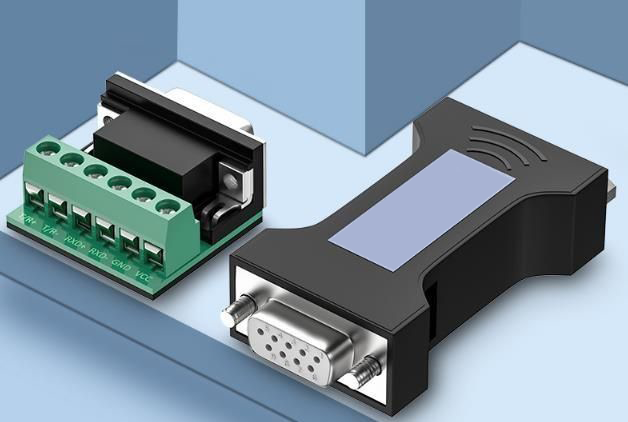Introduction
In the vast and evolving landscape of the communication industry, understanding the nuances of different communication protocols is crucial. RS-232 and RS-485 are foundational standards that facilitate serial communication between devices. Despite their common use, these two protocols’ technical and practical differences can significantly impact their application and effectiveness in various contexts. This blog post aims to demystify RS-232 and RS-485, highlighting their unique characteristics and guiding you through the decision of which to use for specific applications.
What is RS-232?
RS-232, also known as Recommended Standard 232, is a serial communication protocol that was introduced in the 1960s. It’s designed for point-to-point communication, typically used for short-distance communication and serial ports on personal computers. The RS-232 standard defines the voltage levels that correspond to logical one and zero levels, which are +15 to +25V for a logical “0” and -15 to -25V for a logical “1”, with distances up to 50 feet at speeds up to 19.2 kbps. Its simplicity and widespread availability have made it a longstanding choice for applications requiring straightforward serial data exchange, such as modems, printers, and various types of industrial and network equipment.
What is RS-485?
In contrast, RS-485, introduced later, is designed for multi-point communication over longer distances. It uses differential signaling, which allows it to communicate over distances of up to 4000 feet and at speeds up to 10 Mbps. This method transmits data by varying the voltage between two wires, making it less susceptible to noise and interference than RS-232. RS-485’s ability to support up to 32 devices on a single bus system makes it ideal for creating networks of devices that need to communicate with each other, such as in building automation, security systems, and industrial control applications.
Differences between RS-232 and RS-485
The key differences between RS-232 and RS-485 lie in their signaling methods, communication distance and speed, network topology, connector types, electrical characteristics, and practical applications.
● Signaling Method: RS-232’s single-ended signaling is more susceptible to noise, limiting its use to shorter distances. RS-485’s differential signaling, however, uses two wires to transmit each bit of data, significantly reducing susceptibility to electrical noise and allowing for longer cable runs.
● Connection Distance and Speed: RS-232 is limited to approximately 50 feet at lower speeds, while RS-485 supports distances up to 4000 feet at much higher speeds, offering greater flexibility for industrial applications.
● Network Topology: RS-232’s point-to-point topology restricts it to communication between two devices. RS-485’s multi-point topology, however, allows for up to 32 devices on a single network, enabling more complex and interconnected systems.
● Connector Types and Pin Configurations: While RS-232 commonly uses DB9 and DB25 connectors, RS-485 can use various connector types, reflecting its adaptability in different environments.
● Electrical Characteristics: RS-485’s differential signaling provides a significant advantage in terms of noise immunity and reliability over longer distances compared to RS-232’s single-ended signaling.
● Practical Applications: These differences make RS-232 best suited for simple, short-distance connections, such as peripheral to PC communications. In contrast, RS-485’s features are tailored for more demanding industrial environments that require robust communication over greater distances and among multiple devices.
| Parameter | RS232 | RS485 |
|---|---|---|
| Line configuration | Single-ended | Differential |
| Mode of operation | Simplex or full duplex | Simplex or half duplex |
| Maximum cable length | 50 feet | 4000 feet |
| Maximum data rate | 20 kbits/s | 10 Mbits/s |
| Typical logic levels | ±5 to ±15 V | ±1.5 to ±6 V |
| Minimum receiver input impedance | 3 to 7 kΩ | 12 kΩ |
| Receiver sensitivity | ±3 V | ±200 mV |
Choosing Between RS-232 and RS-485
The decision between RS-232 and RS-485 hinges on the specific needs of your project. Consider RS-232 for simple, short-distance connections where ease of use is paramount. Opt for RS-485 in scenarios requiring long distances, high data rates, and the connection of multiple devices, particularly in electrically noisy environments.
Conclusion
Understanding the differences between RS-232 and RS-485 is crucial for anyone involved in the communication industry. Each protocol has its unique strengths, making it suitable for different applications. By considering your specific needs in terms of distance, speed, and network complexity, you can make an informed choice between these two venerable standards.



